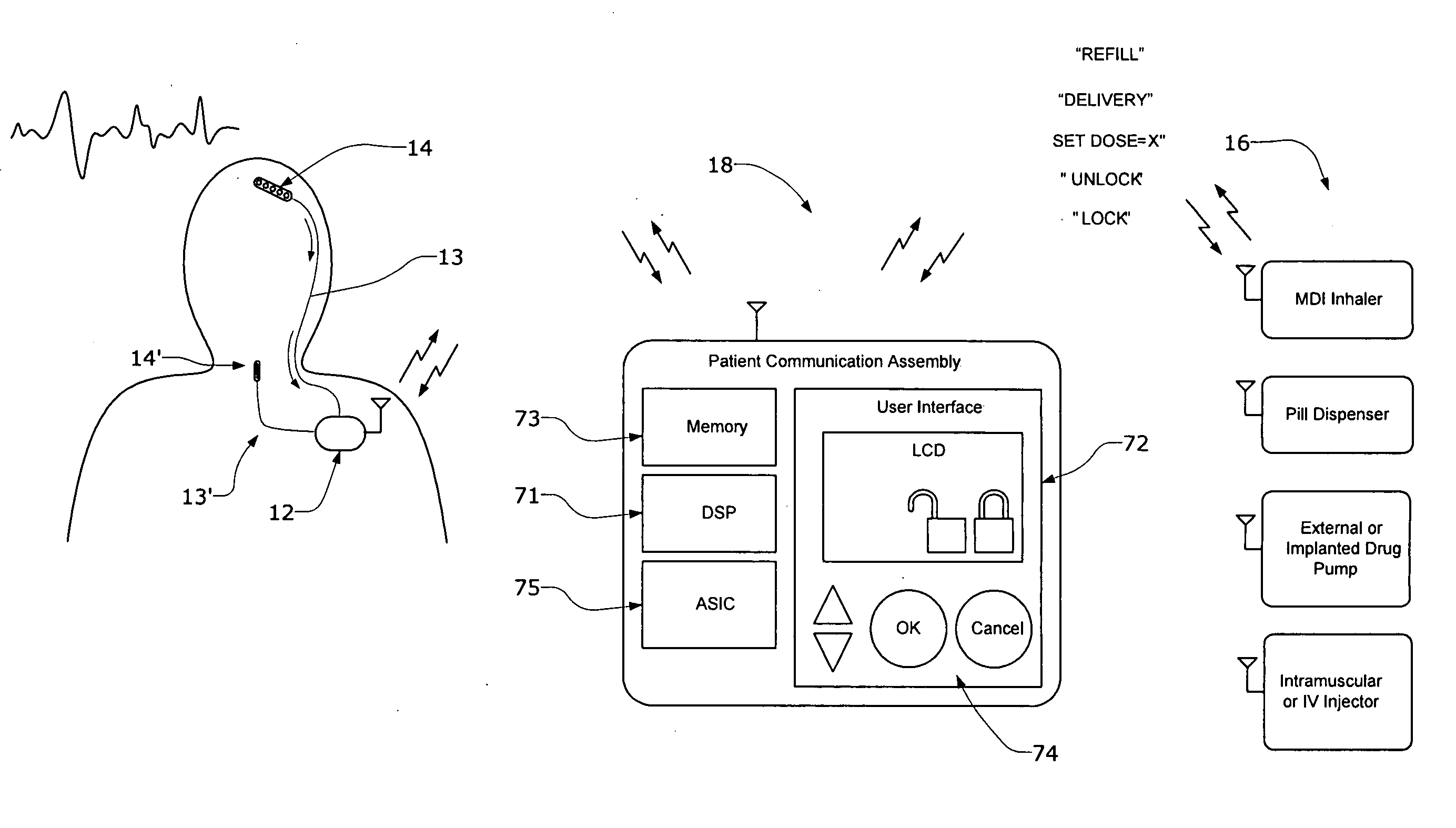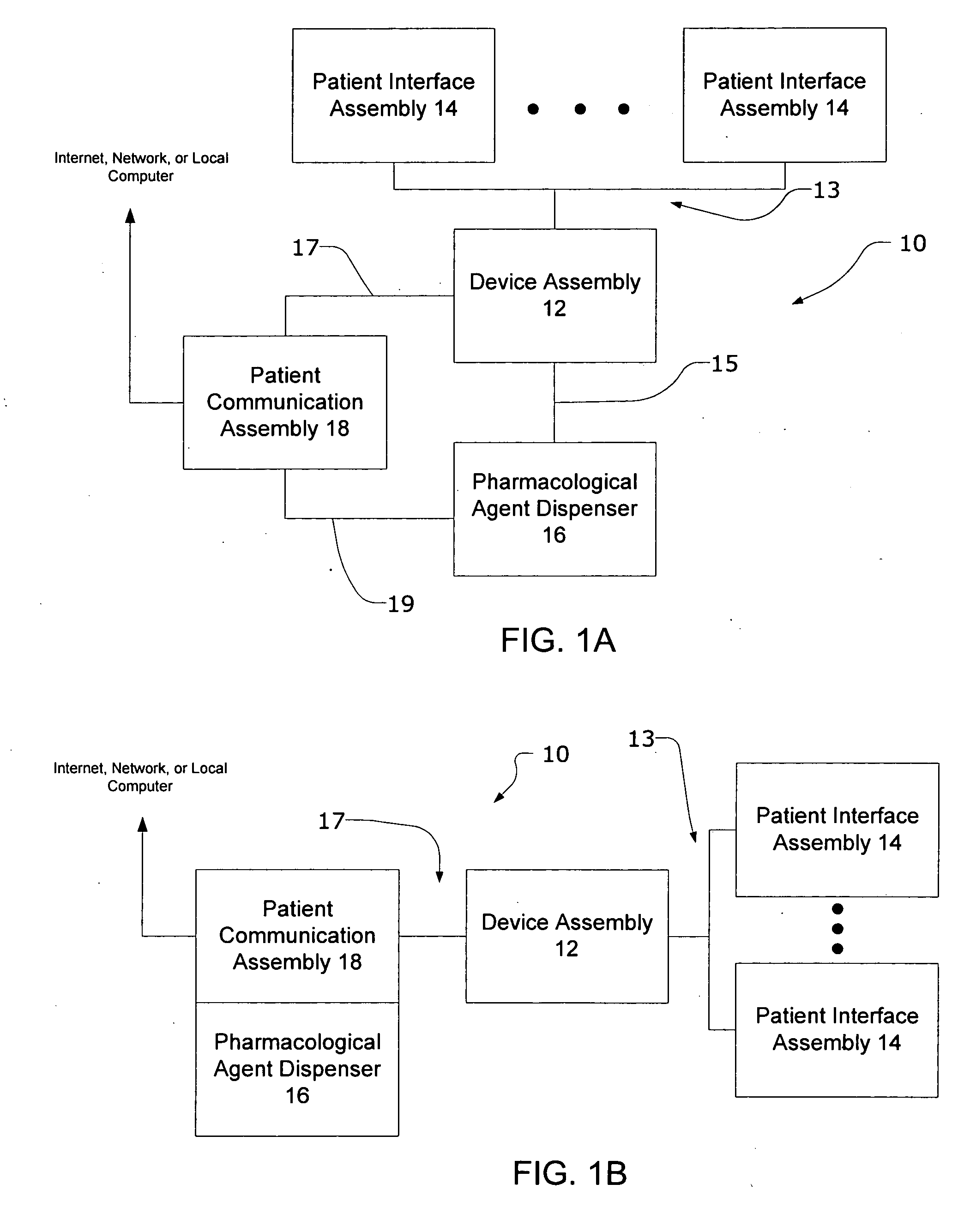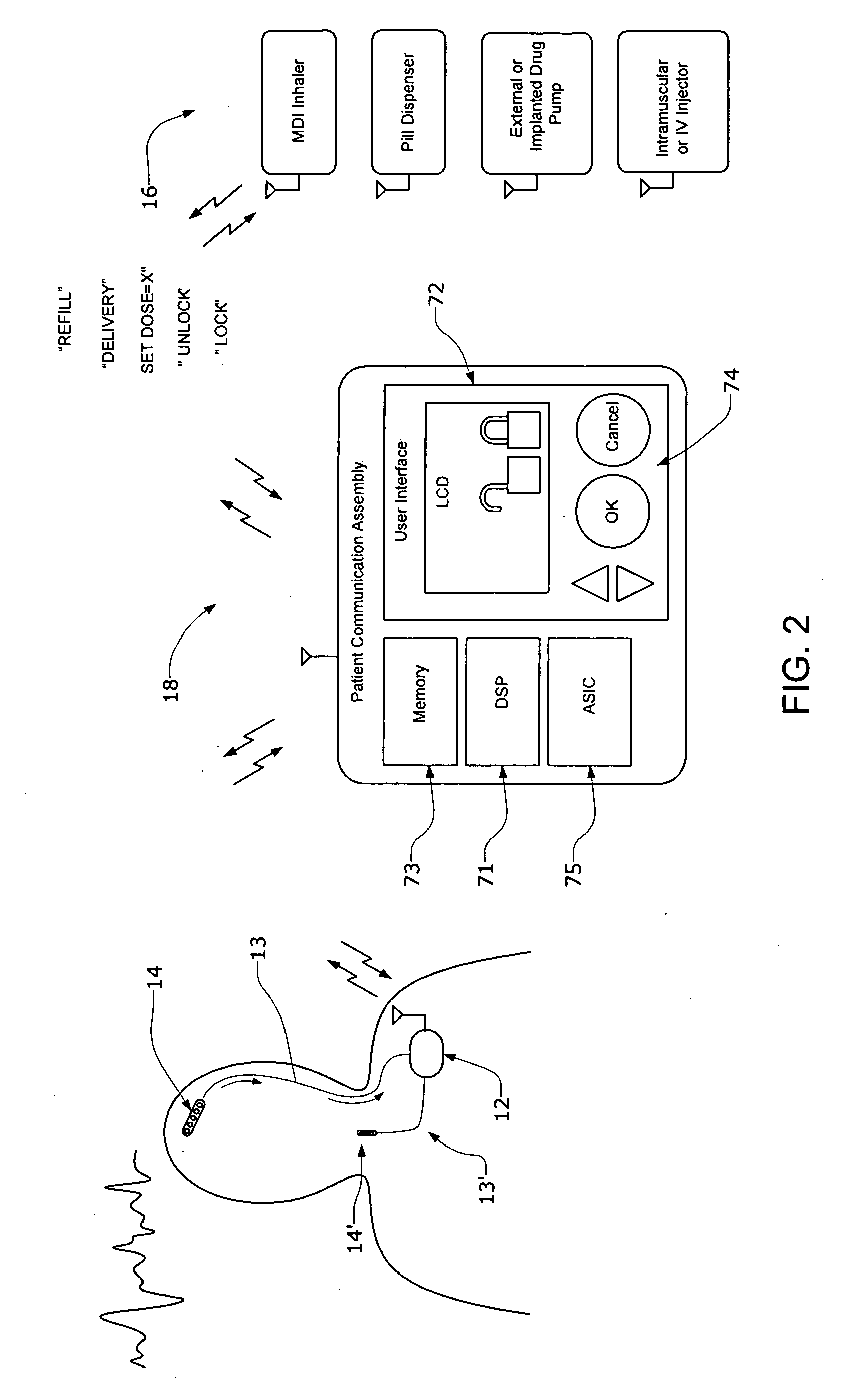Systems and methods for characterizing a patient's propensity for a neurological event and for communicating with a pharmacological agent dispenser
a technology for neurological events and patient propensity, applied in the direction of drugs, pharmaceutical delivery mechanisms, instruments, etc., can solve the problems of affecting the patient's ability to communicate with the dispenser of pharmacological agents, affecting the patient's ability to respond to medical care, and affecting the patient's ability to function normally, so as to reduce the risk of future seizure, reduce the propensity or likelihood of future seizure, and selectively limit the access to and administration
- Summary
- Abstract
- Description
- Claims
- Application Information
AI Technical Summary
Benefits of technology
Problems solved by technology
Method used
Image
Examples
Embodiment Construction
[0043]FIG. 1A illustrates a simplified system 10 that is encompassed by the present invention. System 10 includes a device assembly 12 that is coupled to one or more patient interface assemblies 14 with a communication link 13. For ease of reference, device assembly 12 is illustrated as a single component, but it should be appreciated that device assembly 12 may be comprised of multiple components that may be implanted within a patient's body, external to the patient's body, or a first component of the device assembly may be implanted and a second component of device assembly may be external to the patient's body.
[0044] Patient interface assembly 14 may be configured to sense one or more signals from the patient, deliver therapy to the patient, or both. Patient interface assembly 14 illustrated to in FIG. 1A typically includes a plurality of electrodes, thermistors, physiological sensors, or other sensors as known in the art. In preferred embodiments, the patient interface assembly...
PUM
 Login to View More
Login to View More Abstract
Description
Claims
Application Information
 Login to View More
Login to View More - R&D
- Intellectual Property
- Life Sciences
- Materials
- Tech Scout
- Unparalleled Data Quality
- Higher Quality Content
- 60% Fewer Hallucinations
Browse by: Latest US Patents, China's latest patents, Technical Efficacy Thesaurus, Application Domain, Technology Topic, Popular Technical Reports.
© 2025 PatSnap. All rights reserved.Legal|Privacy policy|Modern Slavery Act Transparency Statement|Sitemap|About US| Contact US: help@patsnap.com



